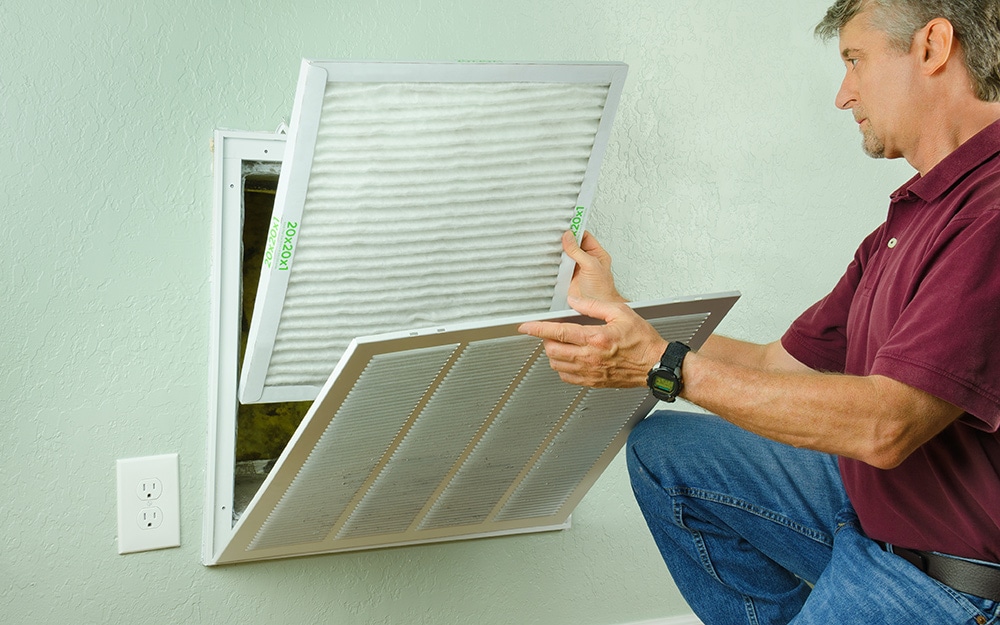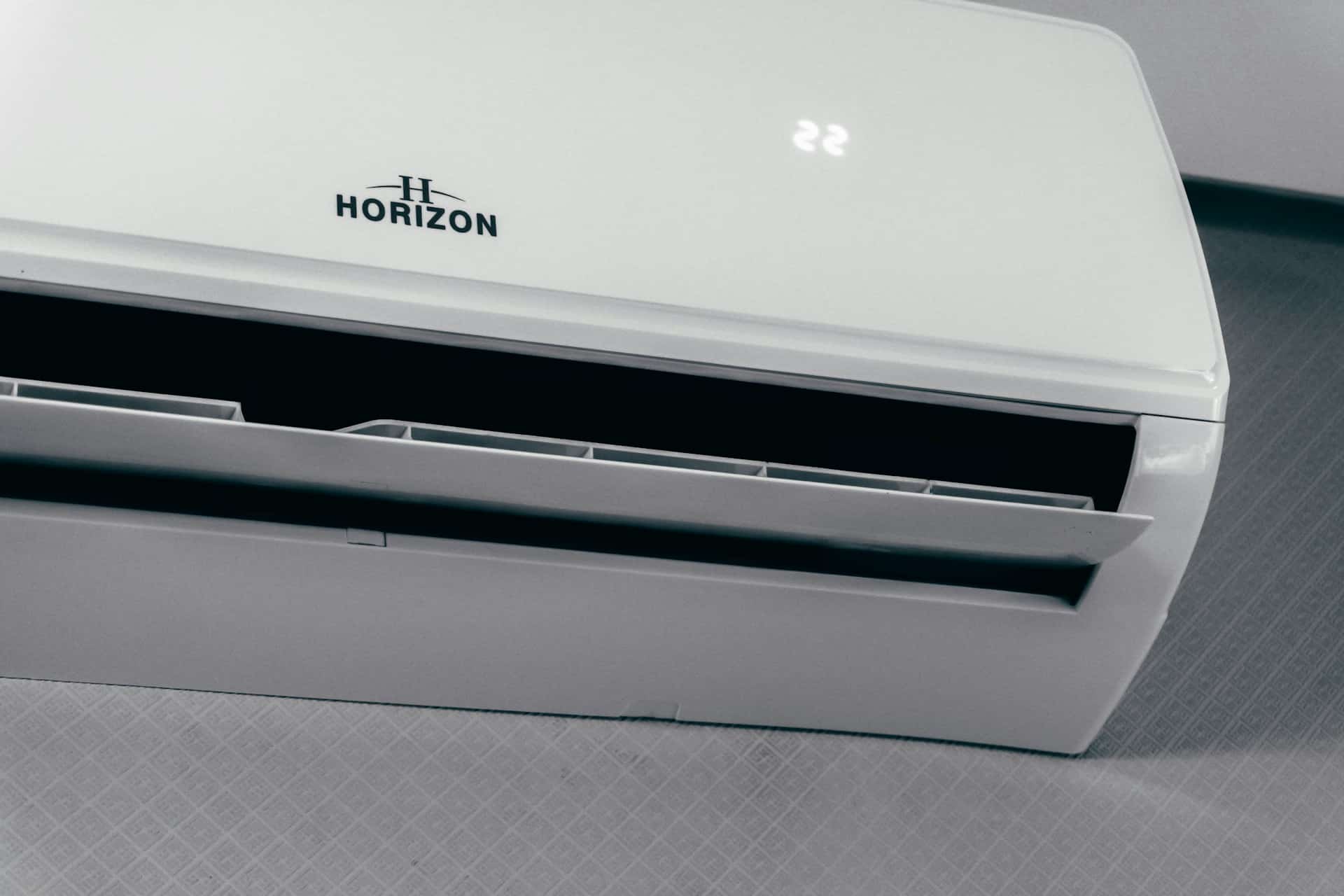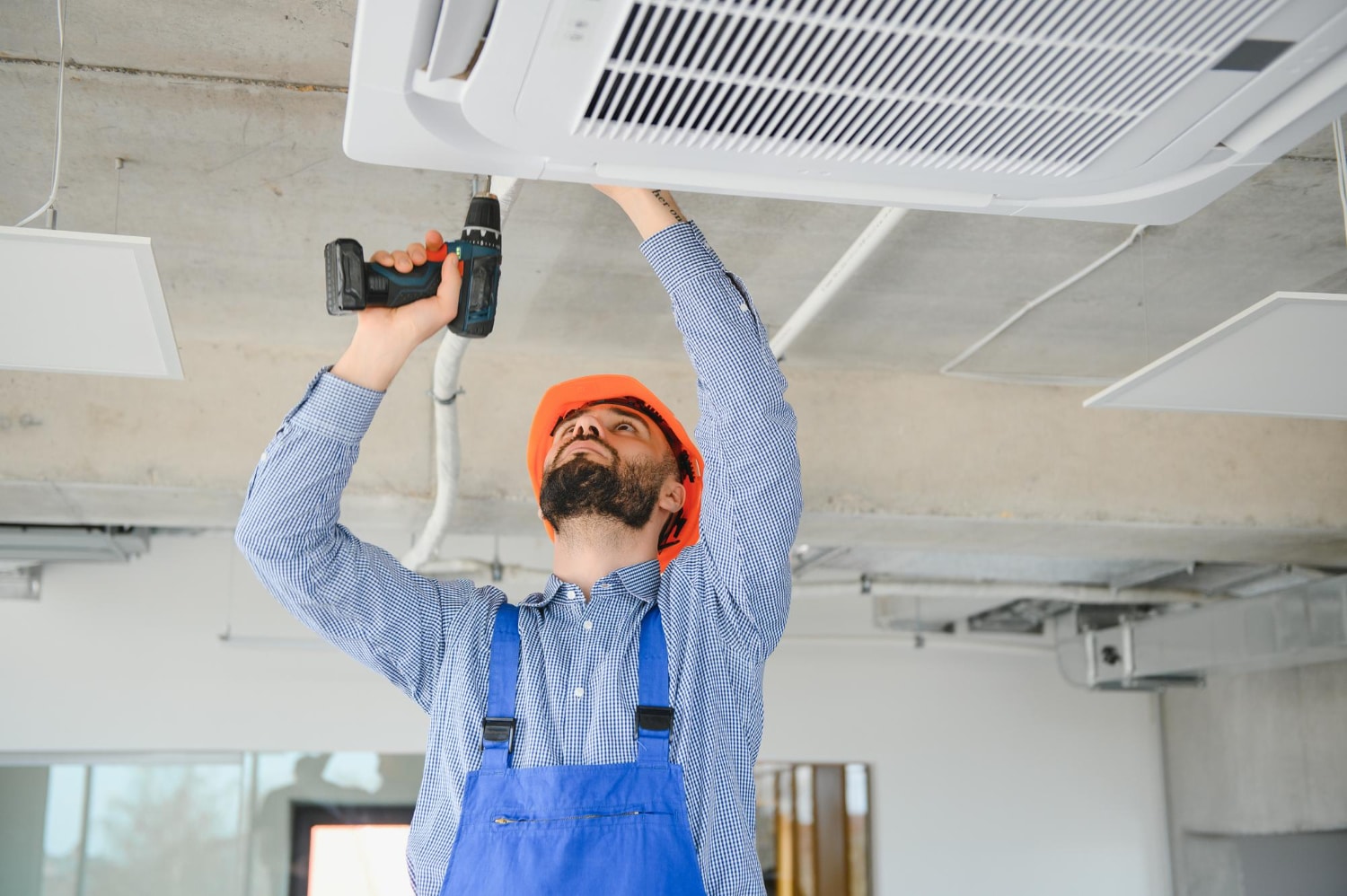We don’t talk about air filters much when HVAC systems come up in conversation. They kind of fly under the radar, right? I get it—they don’t seem like a big deal. Just a thin panel tucked somewhere inside the system. But wait until it gets clogged with dust, pet hair, and whatever else is floating around your home. That’s when things change. Suddenly, your HVAC struggles to do even the basics: cool your room, keep the air flowing, or filter out allergens. And what was once a simple, invisible job becomes a full-blown problem. So yeah, air filters matter, more than most people realize. And in this guide, I’ll break down what they do, how they work, and most importantly, how often you should change your air filter to keep everything running smoothly.
What Even Is an Air Filter?
Before we get into when and how to change it, let’s start with the basics: what is an air filter.
Well, you can think of it like your home’s invisible air bodyguard. It stands guard at the front of your heating and cooling system, catching all the unwanted stuff: dust, pollen, pet hair, and even tiny invisible nasties, before they can sneak into your furnace, air conditioner, or worse, your lungs.
Thanks to this filter, your indoor air quality stays fresh, your HVAC system runs smoothly, and your allergies stay in check. So, if you think it doesn’t matter, believe me, it does.
But when that filter gets dirty? Things go downhill fast. Airflow gets blocked, your system has to work harder, and you’re left with discomfort, dust, and potential system failures on the horizon.
How Air Filters Actually Work?
Here’s the simple version:
Your heating and cooling unit pulls air in, heats or cools it, and sends it back into your home. But first, that air goes through a filter.
If the filter is clean, it traps unwanted particles and lets the clean air pass through. If it’s a clogged filter, airflow slows down, your system strains, and you lose comfort.
That’s why air filter replacements are such a big deal, even if they seem small.
This was a simple explanation; however, if you want to know about how air filters work in detail, this article guide is for you. It covers everything about air filters in detail.
Where do You Find Air Filters?
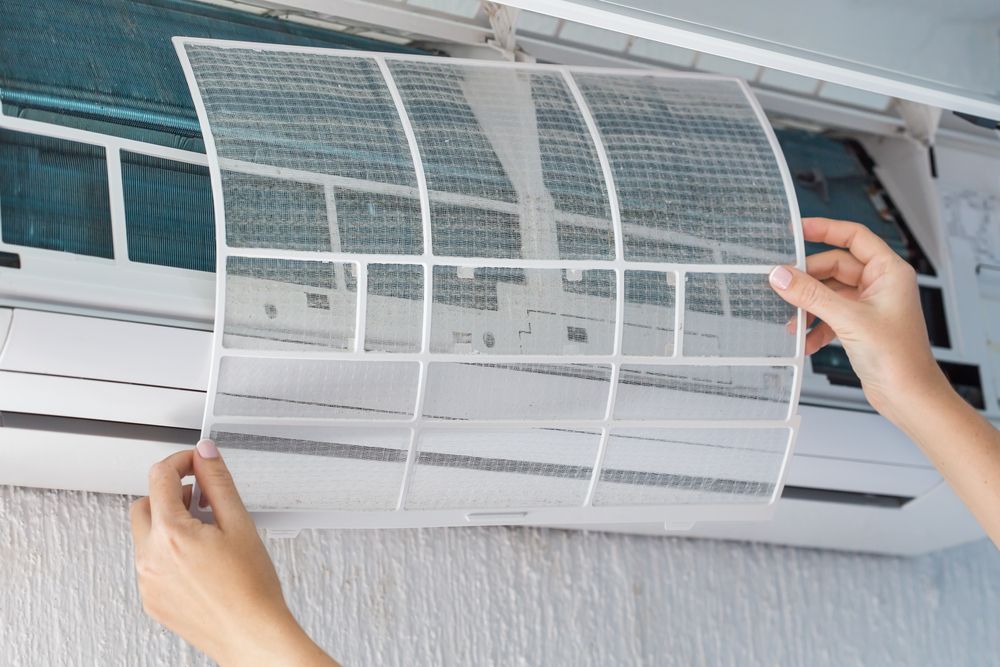
Credit: rescueairtx.com
You’ll mostly find air filters in your:
- Furnace
- Air conditioner
- HVAC system (central units)
- Air purifiers
- Even your engine air filter in cars
Each of these systems depends on filters to keep things running smoothly and your home comfort steady.
Signs Your Filter Needs a Change
So, how to tell if the air filter needs replacing in the house? The deal is that these signs aren’t always clear. Here’s what to look out for:
- Strange smells coming from vents – That musty or dusty smell? It’s often air trying to push through a dirty filter, so it’s a sign.
- Visible dust building up faster than usual – If you’re dusting more often than you used to, your filter might not be trapping particles like it should.
- Less airflow than normal – Noticing weaker air from your vents? A clogged filter could be blocking it.
- Higher energy bills – You might know that when the airflow drops, your system has to work harder, which means more electricity and a bigger bill.
- More sneezing, coughing, or allergy flare-ups – Poor indoor air quality can trigger allergy symptoms if the filter isn’t doing its job.
- System sounds different or runs weird – If your system is louder, cycles on and off a lot, or just feels “off,” your filter might be the culprit.
- It just looks gross – Pull the filter out. If it’s dark gray, dusty, or has visible buildup, that’s a dirty filter. Time to change it.
These are all classic symptoms of a dirty air filter, and they’re your system’s way of saying, “Hey, I need some fresh air, too!”
Now, if your air filter is showing any of these signs, and you need expert help for air filter replacement, you can get in touch with JLM experts. We will make sure this tough job becomes a breeze. Schedule a call now and explore our services.
How Often to Change Your Air Filter?
Let’s Clear It Up
Here’s the million-dollar question: How often should furnace filters be changed?
Well. It depends. But here’s what you need to know:

If you’re asking, “How long does an air filter last?”, this table covers it. But, folks, always check your system’s manual and do a visual inspection just to be sure.
Here’s Exactly How to Replace It Without Stress
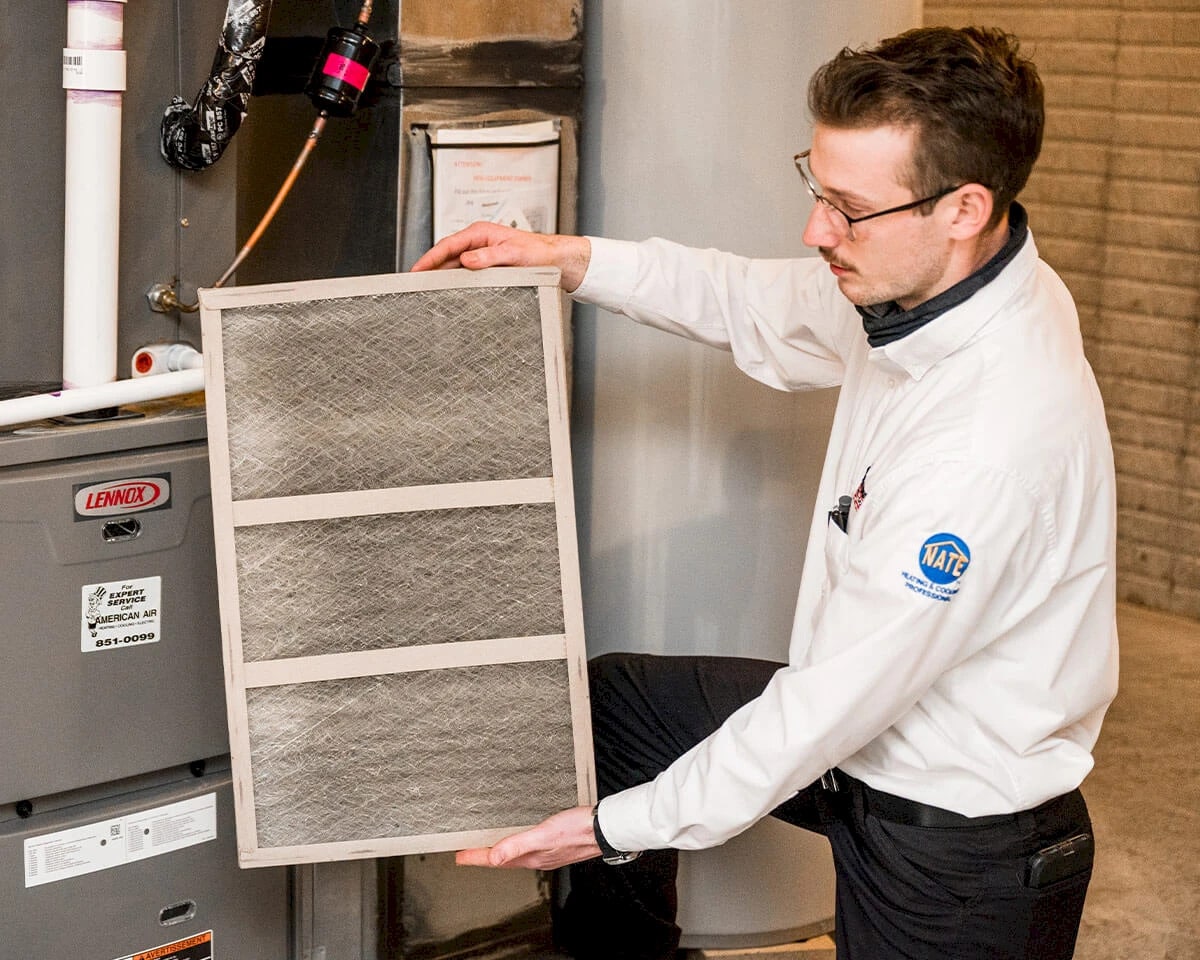
Credit: atlasbutler.com
If you’re unsure how to replace the HVAC filter, don’t worry about it.I had the same confusion, and now I am here to help you out. The process is simple, quick, and can seriously help with your indoor air quality and energy efficiency, especially if you’ve been dealing with a clogged filter.
Here’s what to do:
- Turn off your HVAC system – Safety should be your first step. Whether it’s your furnace or air conditioner, shut it off before diving in.
- Find the filter location – Most filters are located behind the return vent or inside the furnace or air handler. A quick check of your unit’s manual will help if you’re unsure.
- Slide out the old filter – Note the size (printed on the edge) and the airflow direction arrow. You’ll need both for a smooth filter replacement.
- Do a visual inspection – If it’s gray, dusty, or packed with debris, it’s a classic dirty filter—a major reason your system may work harder and your energy bills keep rising.
- Insert the new filter – Line up the airflow arrow correctly and slide it in snugly. A clean filter keeps your heating and cooling system running strong and helps maintain home comfort.
- Power your system back on – That’s it! You’ve just tackled one of the most important tasks in your air filter replacement schedule.
Still wondering, “How often should I replace my furnace filter?” For most homes, every 30 days to 90 days is ideal, though that depends on pets, allergies, and how hard your HVAC system runs.
And if you’re ever in doubt, a quick search on “how to replace HVAC filter” will bring up videos that make the whole process even easier.
Let’s Talk Maintenance
I think it’s better to be on the safe side rather than to regret later. This is why maintenance is important. Some tips, and boo,m you’ll be more mindful of your filter replacements.
- Set a phone reminder every 30 days to check your filter.
- Keep a few extra filters at home so you’re always ready.
- Vacuum around vents to cut down on dust.
- Check with your HVAC pro if you’re not sure what kind you need.
This simple air filter replacement schedule will keep your heating and cooling system happy and help avoid system failures down the line.
Know When to Call the Pros
Sometimes, even after a fresh filter, your system just isn’t right.
That’s when it’s time to call in an HVAC technician. They’ll:
- Inspect deeper parts of your furnace or AC unit
- Clean parts you can’t reach
- Help you figure out how often to change furnace filters based on your lifestyle and system type
If your system is older or keeps acting up, this is one call you won’t regret. This is where you’ll need us. Based somewhere in Arizona? Just tell us about yoru HVAC needs and leave the rest to us.
Wrapping It Up
So, here’s the deal: how often should you replace the air filter? Probably more than you think.
A clean filter means clean air, a healthier home, lower energy bills, and a system that lasts longer. Not bad for a five-minute fix.
So don’t wait for symptoms. Set a schedule, stick to it, and enjoy that fresh, breezy comfort you totally deserve.

